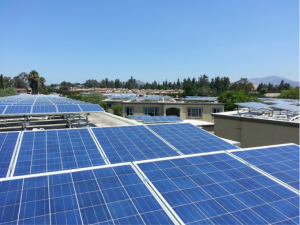 With more solar panels, internet connected home appliances, electric vehicles, and small-scale batteries, California will soon have millions of “distributed” energy resources it can tap into to make the grid more efficient and clean. The entity in charge of managing the grid just made it much easier to connect and aggregate these items as a bulk resource:
With more solar panels, internet connected home appliances, electric vehicles, and small-scale batteries, California will soon have millions of “distributed” energy resources it can tap into to make the grid more efficient and clean. The entity in charge of managing the grid just made it much easier to connect and aggregate these items as a bulk resource:
California is already busy creating new regulations and market structures to integrate rooftop solar, behind-the-meter batteries, plug-in electric vehicles and fast-acting demand response systems into its grid. This week, California’s grid operator took another step down this path — one that could allow these resources to tap the state’s grid markets as a revenue-generating resource, possibly as early as next year.
On Wednesday, the California Independent System Operator (CAISO) published a proposal (PDF) for creating a new class of grid market players, known as distributed energy resource providers — DERPs for short. In simple terms, the proposal sets rules for how DERs can be aggregated and dispatched to serve the same grid markets open to utility-scale energy installations today.
As the rules roll out and get refined, the state will become an international leader on integrating these resources into the grid, while providing owners of these assets with an additional revenue stream — further encouraging their deployment.


